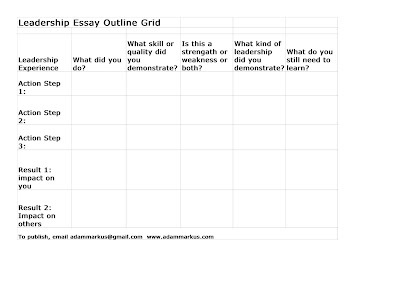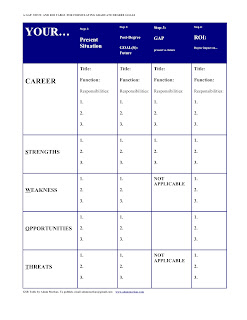UC Berkeley Haas MBA Essays for Fall 2011 Admission
Nov, 15, 2010
Categories: Admissions Consulting | application | MBA | MBA留学 | UC Berkeley Haas
CHANGES TO THE CURRICULUM:
Haas has made much of its changes to its curriculum. See here and here. To listen to the Deans of Haas, HBS, and Kellogg discuss their curriculum, go here.
IT IS CRITICAL TO CONSIDER CHANGES TO THE CURRICULUM IN TERMS OF YOUR APPROACH TO SHOWING FIT WITH HAAS. The key component of this change is the Berkeley Innovative Leader Development (BILD):
“BILD is the connective theme that runs through the entire Berkeley MBA curriculum to ensure that every student develops the skills required of innovative leaders.
Infused with BILD’s innovative leadership perspective, the Berkeley MBA’s rigorous general management curriculum teaches you to become a leader who can harness new ideas to create value for your firm. You acquire skills and qualities that enable you to drive growth to ensure your organization thrives.”
For more about BILD, including an interactive of the concept, see here. The interactive map actually provides a complete overview, so I suggest reviewing it closely.
My Interactions with the Haas Community
1. What are you most passionate about? Why? (250-word maximum
2. Tell us about your most significant accomplishment. (250-word maximum)
3. At Haas, our distinctive culture is defined by four key principles — question the status quo; confidence without attitude; students always; and beyond yourself. Give an example of when you have demonstrated one of these principles. (250 words maximum, Review Berkeley-Haas’ Defining Principles)
4. There are many ways to learn about our program, what steps have you taken to learn about the Berkeley MBA? (250-word maximum)
Required Essays:
- Give us an example of a situation in which you displayed leadership. (500 word maximum)
- What are your post-MBA short-term and long-term career goals? How do your professional experiences relate to these goals? How will an MBA from Berkeley help you achieve these specific career goals? (1000 word maximum)
- (Optional) Please feel free to provide a statement concerning any information you would like to add to your application that you haven’t addressed elsewhere. (500 word maximum)
Short Answer 3. At Haas, our distinctive culture is defined by four key principles — question the status quo; confidence without attitude; students always; and beyond yourself. Give an example of when you have demonstrated one of these principles. (250 words maximum, Review Berkeley-Haas’ Defining Principles)
While some will write about a work-related topic here, I don’t think that everyone must. The key thing is to fully connect yourself with one of the four key principles that underlies the BILD curriculum.
I think it is best if we examine each of these principles.
The basic structure for this essay:
1. State clearly which key principle you will be connecting yourself with. Only focus on key principle.
2. Provide an example that demonstrates your connection to this key principle. Only focus on one example.
I suggest you discuss a specific example that is not covered elsewhere in your essay set or if it is mentioned elsewhere is discussed in a very different way from this version. It is easy to imagine the example here overlapping with essays Short Answers 1 and 2 and Essay 1, so be careful.
The four principles are discussed at http://www.haas.berkeley.edu/strategicplan/culture/. I suggest reviewing that page. I have reproduced the content below.
Please see my analysis of Stanford Essay 3 Option D and MIT Essay 1 as my analysis of those two questions would apply here.
Required Essay 1. Give us an example of a situation in which you displayed leadership. (500 word maximum)
I have developed the following grid to help you outline leadership stories. The categories this grid employs may go beyond any particular schools essay requirements. Filling it out completely will help you write about your leadership in a way that will help convince admissions of your leadership potential.
 CLICK TO ENLARGE.
CLICK TO ENLARGE.
How to use the grid:
1. Decide on a specific story.
2. Identify the most significant things you did in the situation, these are you action steps.
3. For each action step identify:
- What skills or qualities you demonstrated to complete this step.
- The strengths you demonstrated to complete this step.
- The kind of leadership you demonstrated.
- What you still need to learn about leadership.
5. After completing the chart you will see that some aspects of your action steps may be repeated. If there is a total duplication and nothing new is shown, either you need to redefine the action step or you may decide not to focus on it very much.
6. Once you think you have two to four fully worked-out action steps for two to three stories, start writing your essay.
7. Next start re-writing. Eliminate duplicate points made between action steps. Make choices about what parts of each action to step to highlight. Given the word limits, you will have to make some decisions about what to include. Simply providing a description of your actions, is not enough. Consider what it signifies about you. Consider what your actions reveals about your leadership potential.
Finally, thinking and writing about leadership is an important part of preparing for interviews because you can be certain that you will have to talk about leadership. So, you might find that the parts of the outline you jettison now will become valuable when you will want to have alternative stories for your Haas interview.
BEFORE YOU WRITE
Before writing this essay, if you have not done a similar essay for another school, I suggest going through a formal process of goals analysis because it will really help you determine the most important things you need to tell Haas. You can use my GAP, SWOT, AND ROI TABLE FOR FORMULATING GRADUATE DEGREE GOALS for this purpose (see below). I think Gap, SWOT, and ROI analysis are great ways for understanding what your goals are, why you want a degree, and how you will use it. (Click here for a GMAC report on MBA ROI. )
To best view the following table, click on it.
Step 1.
Begin by analyzing your “Present Situation.” What job(s) have you held? What was/is your functional role(s)? What was/are your responsibilities?Next, analyze your present strengths and weaknesses for succeeding in your present career. REMEMBER: WHEN YOU ARE THINKING ABOUT YOUR STRENGTHS AND WEAKNESS DON’T ONLY THINK ABOUT WORK, THINK ABOUT OTHER ASPECTS OF YOUR LIFE. In particular, some of your greatest strengths may have been demonstrated outside of work, so make sure you are accounting for them.
Strengths: What are you good at? Where do you add value? What are you praised for? What are you proud of?
Weakness: What are you bad at? What are you criticized for? What do you try to avoid due to your own limitations? What do you fear?
Next, analyze the environment you work in right now. What opportunities exist for your growth and success? What threats could limit your career growth?
Step 2. Now, do the same thing in Step 1 for your “Post-Degree” future after you have earned your graduate degree. IF YOU CANNOT COMPLETE STEP 2, YOU HAVE NOT SUFFICIENTLY PLANNED FOR YOUR FUTURE and therefore you need to do more research and need to think more about it.
Step 3. If you could complete step 2, than you should see the “Gap” between your present and your future. What skills, knowledge, and other resources do you need to close the gap between your present and future responsibilities, strengths, and opportunities?
Step 4. After completing Step 3, you now need to determine how an MBA will add value to you. It is possible that an increased salary as a result of job change will be sufficient “ROI” for the degree to justify itself, but you should show how a degree will allow you to reach your career goals. How will the degree enhance your skills and opportunities and help you overcome your weaknesses and external threats? If you can complete Step 4 than you should be ready to explain what your goals are, why you want a degree, and the relationship between your past and future career, as well as your strengths and weaknesses.
The above table will also help you answer such common interview questions as: Where do you want to work after you finish your degree? Why do you want an MBA (or other degree)? What are you strengths? What are your weaknesses? What are your goals? Thinking about these issues now will help you to develop a fully worked-out strategy for how you will best present yourself both in the application and in an interview.
WHY HAAS?
See my comments above regarding Short Essay 4 and changes to the curriculum (BILD).
GOALS
You need to make admissions excited about your future. To do so, you should think about whether your goals are compelling. Admissions committees ask applicants to write about their goals after graduate school, but can applicants actually know what will be on the cutting-edge in two or three years? While many applicants will be able to successfully apply with relatively standard goals (“I want to be a consultant because…”), try to go beyond the typical answer to make your goals compelling.
Be informed. Haas needs to believe you know what you are talking about. If you are changing careers, no one expects you to be an expert, but you should come across as having a clear plan based on real research into your future. If you are planning on staying in your present industry, you should be well informed not only about the companies you have worked for, but about the industry as a whole. If you are not already doing so, read industry related publications and network.
Those who are changing fields should most certainly read industry related publications in their intended field. Think about conducting informational interviews with at least one peer-level and one senior level person in that field.Conduct a peer-level interview to get a good idea of what it would be like to actually work in that industry. Conduct a senior-level interview to get the perspective of someone who can see the big picture and all the little details as well.
Don’t know anyone in your intended field? Network! One great way to start is through LinkedIn. Another is by making use of your undergraduate alumni network and/or career center.
LEARN WHAT IS HOT. No matter whether you are changing fields or not, learn what is hot now and try to figure out what will be hot by the time you graduate. Now, of course, this is just a plan and chances are that what is hot in your industry or field now may very well be cold in the future. The point is to come across to Haas as someone who is not only well informed, but who has CUTTING-EDGE knowledge related to their goals. Some great general sources for learning what is hot:
From the Business Schools: Feed your brain with cutting-edge ideas from the best business schools in the world. Start with California Management Review.Other great sources of information include Stanford Social Innovation Review,Harvard Working Knowledge, Harvard Business Review, Harvard Business School Publishing,Knowledge @ Wharton, University of Chicago GSB’s Working Papers,The University of Chicago’s Capital Ideas, and MIT Sloan Management Review.
You may also want to do a search on iTunes for podcasts: My favorites are Entrepreneurial Thought Leaders (from the Stanford School of Engineering, but totally relevant to the GSB), Chicago GSB Podcast, Net Impact, and Harvard Business IdeaCast. INSEAD, IMD, LBS, and, of course, Haas also have podcasts.
LinkedIn Answers: I would suggest that everyone join LinkedIn and make use of LinkedIn Answers. LinkedIn Answers is a great way to tap into cutting edge expertise (including my admissions advice!) Follow LinkedIn’s rules and you will often be able to obtain excellent information.
Hoovers: For information about specific companies, Hoovers is just a great way to learn about key facts including competitors (a very useful way of knowing who else you might want to work for and to learn about an industry). While primarily focused on the US, Hoovers does have listings for companies worldwide.
Vault: For scope of coverage, this site is a must. Vault includes both career and admissions information. It includes both company specific and industry-wide information.
Other sources: Read magazines, websites, and books that relate to your intended field.
Finally, if you interview with Haas, please see my earlier post.
Questions? Write comments or contact me directly at adammarkus@gmail.com. Please see my
-Adam Markus
アダム マーカス
ビジネススクール エッセイ 大学院入学 カウンセリング コンサルティング 合格対策 MBA留学

